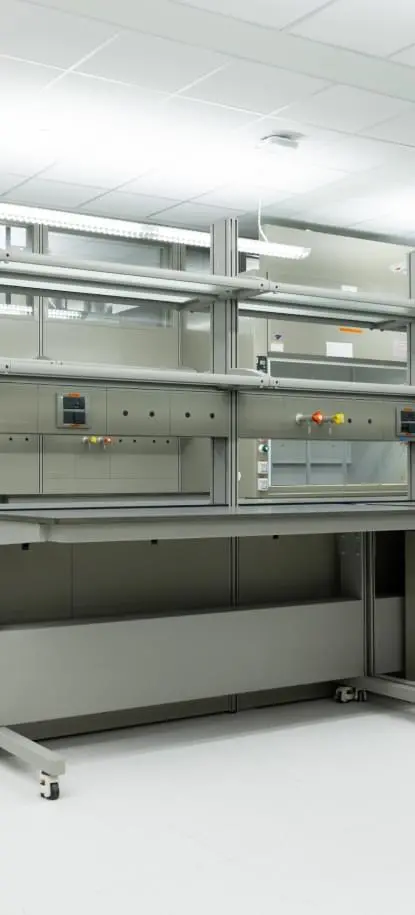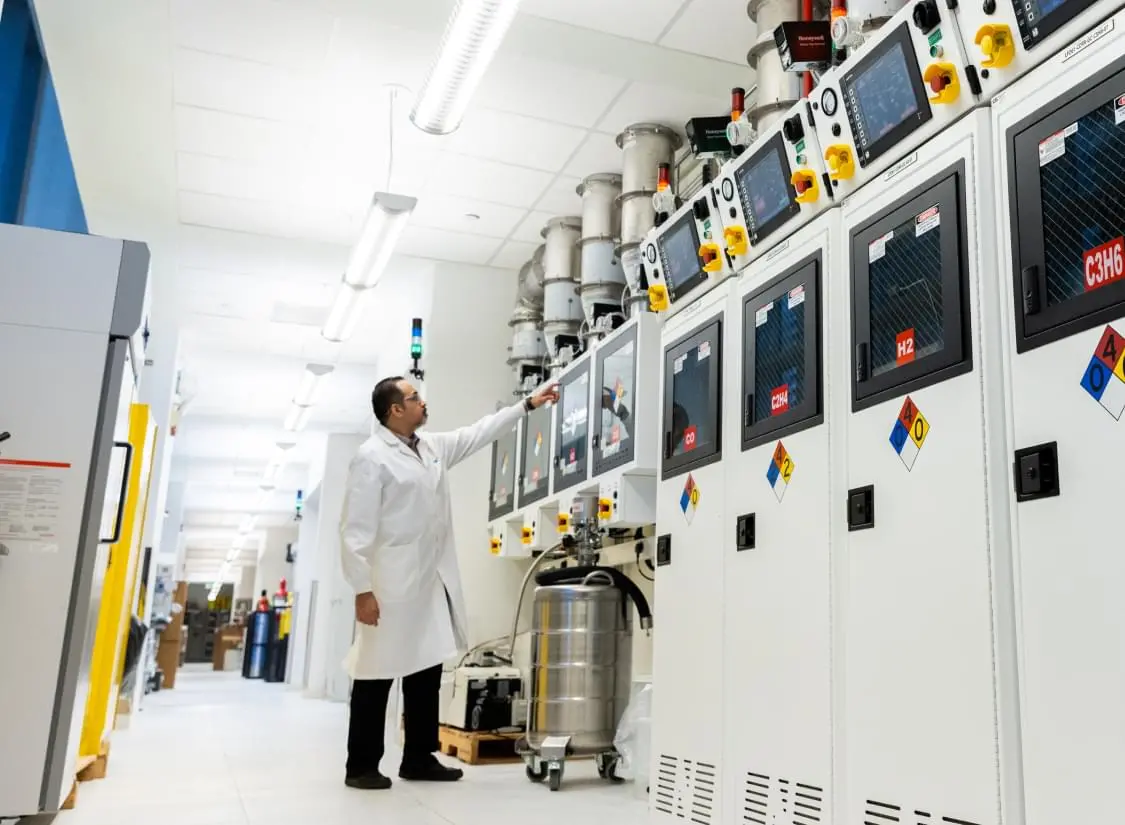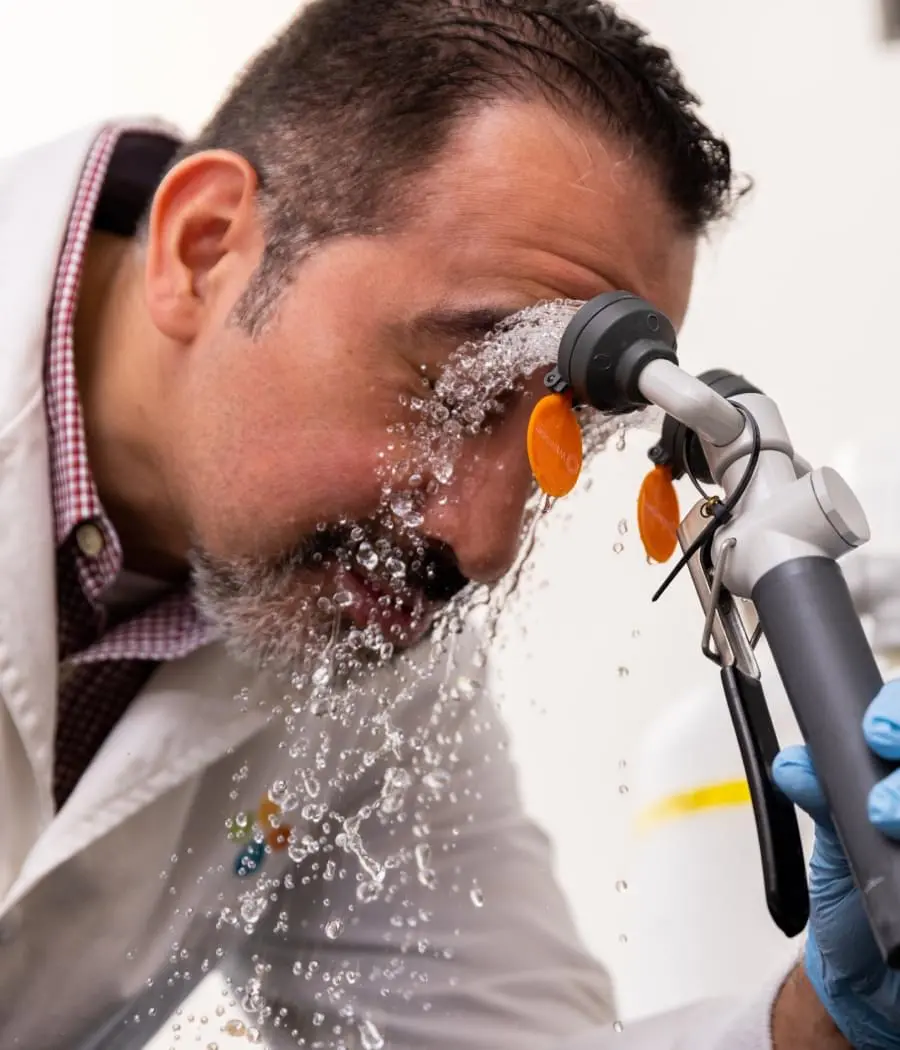




Quick Links:


This page provides information when a Principal Investigator/Tenant transfer his/her laboratory space to a different location on KAUST Campus.

The Principal Investigator/Tenant or Laboratory Safety Representative (LSR) must inform RST (hse@kaust.edu.sa) at least one month before the planned laboratory closure.
The Principal Investigator/Tenant must designate laboratory members who will be responsible for decommissioning the laboratory space.
Before the actual move occurs, the Principal Investigator/Tenant and laboratory staff should visit the new laboratory space and identify where equipment from the old laboratory space will be located. Check to see if the correct electrical, water, gas, and space requirements are available for all equipment and processes.
The Principal Investigator/Tenant or Laboratory Safety Representative (LSR) can contact RST to organize an initial visit of the laboratory space to plan the decommissioning and discuss potential issues.
The designated laboratory members must dispose of all hazardous waste; clean and decontaminate all work surfaces, etc. to ensure that the laboratory is free of hazards.
The designated laboratory members must ensure that all equipment is cleaned/decontaminated before it is moved to the new laboratory space.
The designated laboratory members must return to surplus any unwanted equipment and notify the RSO if any of these equipment contain a sealed sources or is a radiation producing equipment. o The RST must carry out a final inspection before the laboratory space can be closed. The inspection is intended to ensure that there are no hazards left in the laboratory
If the laboratory changes building, the current Building Point of Contact must organize a handover meeting with the new Building Point of Contact and the Principal Investigator/Tenant. Before the new laboratory can be operational, RST must conduct the laboratory readiness inspection. To contact chemical warehouse and other supply chain services please contact: WHSOrder@kaust.edu.sa More information available at: https://procurement.kaust.edu.sa/Pages/Supply-Chain.aspx
Equipment must be cleaned and decontaminated using soap and water. If the equipment was used with biological agents it is recommended to use a diluted bleach solution or other appropriate disinfectant (see RST Biosafety Specialists for more information).
Defrost freezer and dry them out before they are moved. o Equipment that will not be moved to the new laboratory space must be returned to Surplus. These will most likely be left in the laboratory space. Equipment that will remain in the laboratory space must be switched off and unplugged.
If the equipment cannot be switched off and unplugged, the LSR or laboratory member must prepare an SOP detailing step by step what needs to be done to turn the equipment off and move the equipment.

Laboratory must contact the Chemical Warehouse to obtain supplies of cardboard boxes, hazardous waste bag, sharps containers, etc.
Alternatively, it is acceptable to reuse clean cardboard containers for chemical segregation. Laboratory must contact the Chemical Warehouse to obtain the required forms to be completed for the various programs: − Return Gas Cylinder Authorization (RGCA) − Return program (applies to Consumables including chemicals) − Reuse Program (applies to chemicals only)
WHSOrder@kaust.edu.sa
Segregate chemicals and decide the ones that will be needed in the new laboratory space and the one that will not be needed (i.e. these will not be moved). − For chemicals that will not be moved, then decide if they satisfy the Return/Reuse Program Eligibility or Donation. − Chemicals that cannot be returned to Chemical Warehouse or donated must be disposed as hazardous waste.
Samples and solutions that have been prepared must be disposed according to the Hazardous Waste Manual. − A completed Hazardous Waste label must be placed on each container, bag or box as per Hazardous Waste Manual. − Follow all guidelines within the Hazardous Waste Manual for preparation of waste. − Contact Chemical Warehouse Hazardous Waste Team to collect the hazardous waste after labelling. − Biological samples must be disposed as per the Hazardous Waste Manual and placed in Biohazard waste bins. These will be collected daily by the housekeeping. − Radioactive waste must be disposed according to the Radioactive Waste Preparation SOP.
Ensure that all chemicals that will be moved are labelled as per requirements in Lab Safety Manual, in good condition and securely close.
Chemicals must be packaged using a packing material (such as vermiculite, ground corn cobs, shipping peanuts, cardboard, absorbent clay, etc.) that is compatible with the chemicals to prevent bottle breakage during transport. − Only place chemicals that are compatible with each other in the same container and do not overload containers with chemical bottles.
For more information please contact: MRP.Team@kaust.edu.sa

Principal Investigator/Tenant ensures cylinders are disconnected from gas lines / brackets, capped prior to returning them or transporting them to the new laboratory space. Principal Investigator/Tenant completes the RGCA (Return Gas Cylinder Authorization) form and coordinates with Chemical Warehouse to collect the cylinders (only unwanted/empty cylinders if the laboratory space is relocating). Chemical Warehouse transports the returned cylinders from the laboratory area and returns them to the appropriate vendor(s).
Clean any spills and decontaminate all surfaces with soap and water such as fume hood, benches, cabinets and drawers, fridges/freezer, etc. Bio storage areas and biosafety cabinets must be decontaminated with bleach solution or other appropriate disinfectant. Areas where radioactive materials were used must be decontaminated and a contamination monitoring must be performed. Ensure ventilated cabinets are left unlocked. Remove all signage in the laboratory. Once all these points have been addressed contact RST to arrange for the final inspection.

Laboratory Move o Equipment move must be coordinated with RAS team. For biosafety cabinets, check the manufacturerʼs guidelines before these equipment are moved.
The transportation of equipment containing sealed source or radiation- producing equipment must be coordinated with the RSO.
Remember that equipment, boxes, or other materials may not be stored outside the laboratory space and service corridor. If you do need to temporarily store these items in the hallway, please contact HSE at hse@kaust.edu.saso proper arrangements can be made. No items may be allowed to accumulate in the hallway or service corridors and they must be removed by the end of each day.
Hazardous materials (chemical, biological, or radiological) may not be left outside the laboratory or service corridor unattended at any time.
Only laboratory workers who have received the appropriate hazardous materials training (e.g. biological, chemical, etc.) may move chemicals.
HSE recommends that a "buddy system" is used in the event of a spill or other emergency. For transport of radioactive materials, this can only be done by the RSO or a person trained and designated by the RSO.
When transporting chemicals, it is best to use carts with lips or trays to prevent containers from being knocked off. Other items that are useful for transport include rubber bottle carriers, five gallon pails, or other forms of secondary containment.
When moving chemicals, wear appropriate personal protective equipment such as safety glasses (splash goggles for corrosives), laboratory coat, and gloves. Remember to remove gloves when touching door knobs and latches, and elevator buttons. If possible, avoid using passenger elevators. If you must use a passenger elevator, request that no passengers ride along with you.
Only use an appropriate cylinder handcart to move compressed gas cylinders. Do not attempt to "roll" cylinders from one area to another.

Principal Investigator/Tenant ensures cylinders are disconnected from gas lines / brackets, capped prior to returning them or transporting them to the new laboratory space. Principal Investigator/Tenant completes the RGCA (Return Gas Cylinder Authorization) form and coordinates with Chemical Warehouse to collect the cylinders (only unwanted/empty cylinders if the laboratory space is relocating). Chemical Warehouse transports the returned cylinders from the laboratory area and returns them to the appropriate vendor(s).